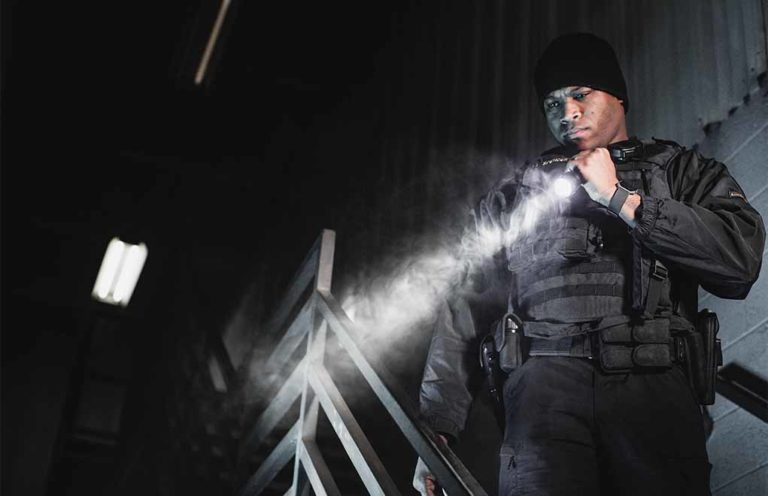
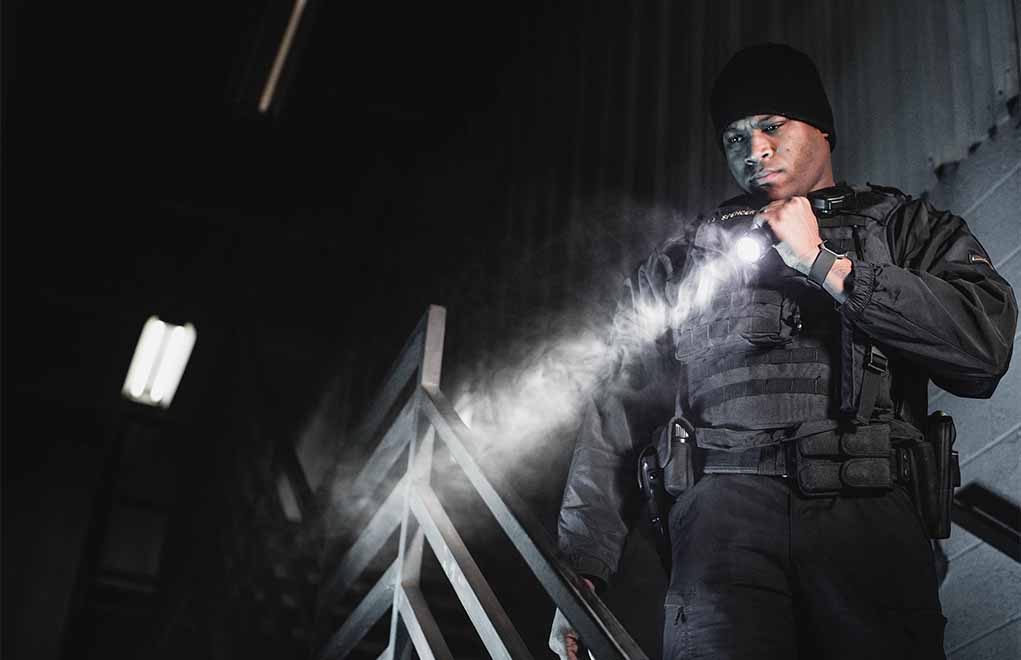
Flashlights and spare tires have a lot in common: In a perfect world, you’ll never need either of them. But when you need one, you need it bad.
What Are Top Flashlight Choices:
- Ledlenser P7
- Surefire EDCL-1
- Crimson Trace CWL-300
- Streamlight Pro TAC HL
- Maglite MAC-TAC CR123
- Duracell Durabeam Ultra
The world can be a very dark place. Not to be negative, but the sun does not shine 24/7, creepy places tend to be poorly lit, and the fullest moon rarely shines bright enough to light your way down a forest path or dark alley.
But most of that is easily fixable. No, they haven’t yet created longer sun cycles or the technology to dial up the intensity of moonlight. A simple hand-held flashlight is all you need to see the light. That much is simple.
Which one is best for you? The short answer: It’s complicated.
Flashlight choices used to be easy, though the options weren’t always top-tier. Big or small. C-cell, D-cell or AA batteries. Switches were either off or they were on. They all gobbled battery power much faster than you hoped, no matter what the size. If you dropped your light, game over. Expose any of them to a little moisture, and you were dealing with battery corrosion very quickly.
These days, however, consumers have a multitude of flashlight choices — so many in fact, that choosing which one can be daunting. Batteries have come a long way in recent years. LED bulbs have revolutionized handheld lights, and flashlights are tougher, more efficient and more effective than ever. Whether you’re standing in the retail isle or perusing online options, it doesn’t take long to become overwhelmed. It’s just a little flashlight after all, right?
How Will You Use It?
Just what you should buy all depends how the light will be used — and how much you want to spend. The price range runs from less than $10 to well more than $250. And on the outside, they all look an awful lot alike.
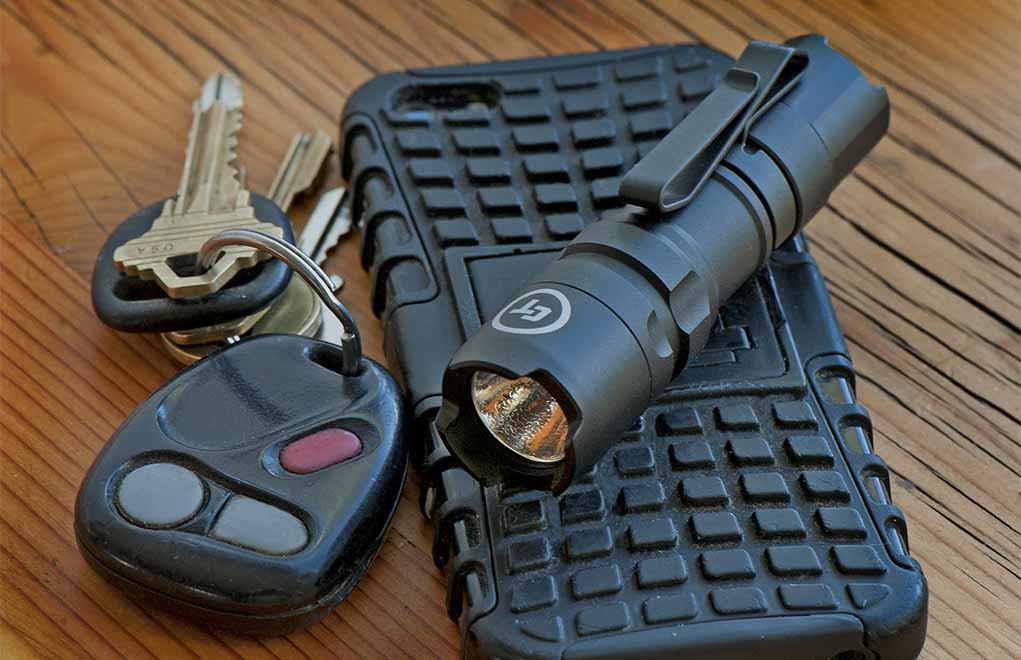
Do you need to shed light on your nightly dog walk, find your way around the house during a power outage or locate your car keys if you drop them in the driveway? For those chores, a basic light should work just fine. The good news is that the less expensive lights can be pretty darned good. Spend $100 and you can expect to have light in your life for the rest of your life.
If you work in law enforcement, as a first responder or spend a big part of your life outdoors in the dark, you have far more considerations. Ponder durability, battery type, size, weight, water resistance, brightness (lumens) plus beam/bulb type.
And then there’s the “simple” on/off switch. Can it be adjusted to lower power to preserve battery life? Could it inadvertently get switched on in your pocket or pack? Can you operate the switch with one hand or with gloves on?
Does a light feel right in your hand? Does the case have some texture for positive gripping and a flat side to keep it from rolling? Does it have an attachment point for a lanyard or carabineer? Does it have a clip for attachment to your belt or shoulder strap?
Most manufacturers ascribe to American National Standards Institute (ANSI) standards in testing and subsequent ratings of flashlights. The packaging for most high-end flashlights includes performance data on lumens, beam distance, run time, impact resistance and water resistance. This helps some with comparisons — but keep in mind that manufactures do their own testing, and a few manufacturers don’t post standardized ratings.
Get More Concealed Carry Information:
Notes On Lumens
Lumens is a measure of the intensity of the light coming out of the flashlight on the highest brightness setting, with new batteries. As a general rule, the higher the number of lumens, the brighter the light will appear. However, multiple flashlights with the same lumen rating might not necessarily be the same brightness due to reflector and beam styles and variations in testing.
How many lumens is enough? It depends. Twenty lumens is about right for reading a book or checking a map. One-hundred lumens should be enough for most household applications or enough light for changing a tire. Five-hundred lumens will blind an attacker at close range and work as a decent search light. And if you’re of the “go big or go home” school of thought, 3,500 lumens would likely burn the hair off a cat at 100 yards.
Other Points To Ponder
Beam distance is how far the light will shine before the brightness diminishes to the equivalent of the light from a full moon. Full moon is the standard for safety when traveling at night. I know that might sound archaic, but it’s a standard of measure most people can comprehend.
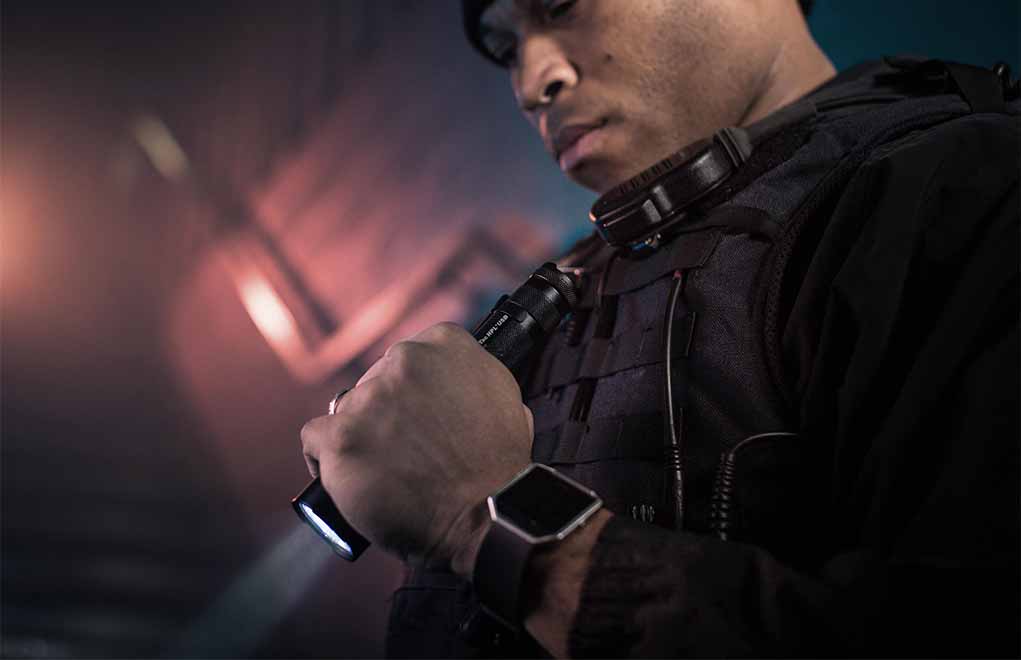
Run time is another critical consideration. A light might generate 1,000 lumens on its highest setting with new batteries — but only for an hour. As a rule, the brighter the mode, the shorter the runtime. Which is more important to you?
Consider a light with a reduced power mode. For example, the switch on the Ledlenser P7 handheld light has both a high and a low setting. On high, the compact light will blast 450 lumens of light out to 300 meters. But, it will drain four AAA batteries in an hour (for practical purposes, it’s rare that you’d need that much brightness for that length of time). Set to the low mode, the same light will provide a practical 40 lumens for 25 hours.
The tubular bodies of most modern flashlights are constructed of either stainless-steel, aluminum alloy or plastic. Durability is a judgement call based on how it feels in your hand and in what environments you’ll be working with that light. If the body walls are thin, the light may not withstand too many drops — but it’s likely going to be very inexpensive.
With those aircraft-grade bodies come O-rings — which, combined with sealed circuits — give the majority of these new-age flashlights exceptional water resistance. If this is important to you, and it should be if the majority of the flashlight’s work will come outdoors, check the packaging for an IPX rating (see sidebar).
Batteries And Bulbs
Most affordably priced performance flashlights use AA or AAA batteries. You can find replacement batteries for them just about anywhere, which is extremely important. A light with dead batteries is useless.
As lights have continued to evolve, some tactical lights have begun to use the CR123A batteries. The lights that are powered by the 123As tend to be compact and very bright, but they very often suck power at a rapid pace.
A few other flashlights run on rechargeable lithium-ion batteries. The savings over the life of the light will likely more than pay for itself, but as you likely already know, lithium-ion batters are expensive. Still, others offer rechargeable power options. If recharging is convenient, it could be the way to go for you — at least from a cost-savings perspective based on the frequency of use.
Most next-generation flashlights sport LED bulbs — it really has very quickly become the standard. The LED’s efficiency boosts run times, and their brightness offerings are topnotch. Factor in durability and brightness and LEDs render other types of bulbs obsolete.
Beam type is another factor to consider when selecting a flashlight. A spotlight is better for penetrating long distances. A floodlight will cover a wider area. Many modern flashlights provide adjustability to dial in one or the other — or something in between — forcing you from having to choose.
Size Matters — A Lot
Ideally, a hand-held light will be compact enough to tuck easily into a pocket or pack, or to clip to a belt. If it’s too bulky, it’s too easy to leave behind out of convenience. But if it’s too small you might not be able to grip it adequately. Look for a balance between portability and performance.
Picking the right light really is a judgment call, based on your personal taste and what information you can gather. If a light meets all your personal performance criteria, feels good in your hand, its operating functions are uncomplicated and it fits your budget — you are good to go.
But beware: Tactical flashlights all look kinda the same. You must look beyond cosmetics. Does the unit have rubber O-rings for extra waterproofness? Does the battery chamber access easily? What kind of warranty, if any, does it have?
Put any light you purchase through its paces early on, especially if you use it in your profession. Check the battery life in real-time. Try out every feature and function. If it all functions as advertised, good deal. If it doesn’t, take it back for a refund and get one that works for you. A flashlight is a convenience, but if you ever find yourself in a situation where light is a necessity, it could save your life.
Top Flashlight Choices
There are a bazillion choices in the flashlight market, and an equally vast range of price points. Here are just a few to check out as you begin the selection process:
Ledlenser P7
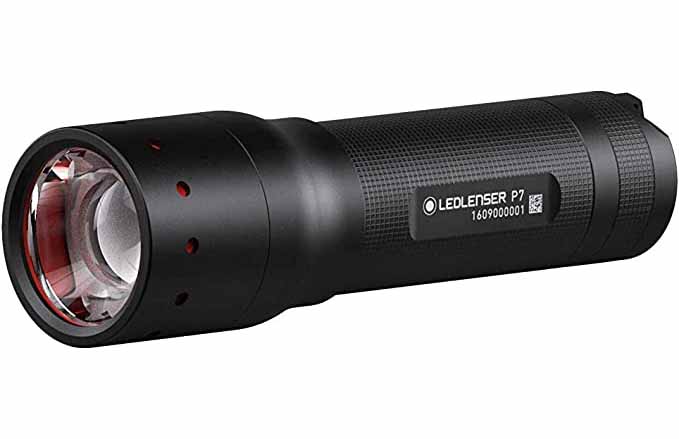
The Ledlenser P7 offers a nice balance of size, power, durability, operational ease and price. The P7 has simple-to-remember high/low/off settings, and it features an advanced focusing system to quickly cast a far-off spot or close-up spill light for any chore in front of you. The rugged anodized aluminum casing cradles four AAA batteries. At full power the light will blast an extremely bright 450 lumens for an hour, and at the low setting you’ll get 25 hours of 40-lumen light. The P7R is a rechargeable version of the same light and costs twice as much, but it puts out a brilliant 1,000 lumens for 2 hours on a full charge.
MSRP: $70
Surefire EDCL-1
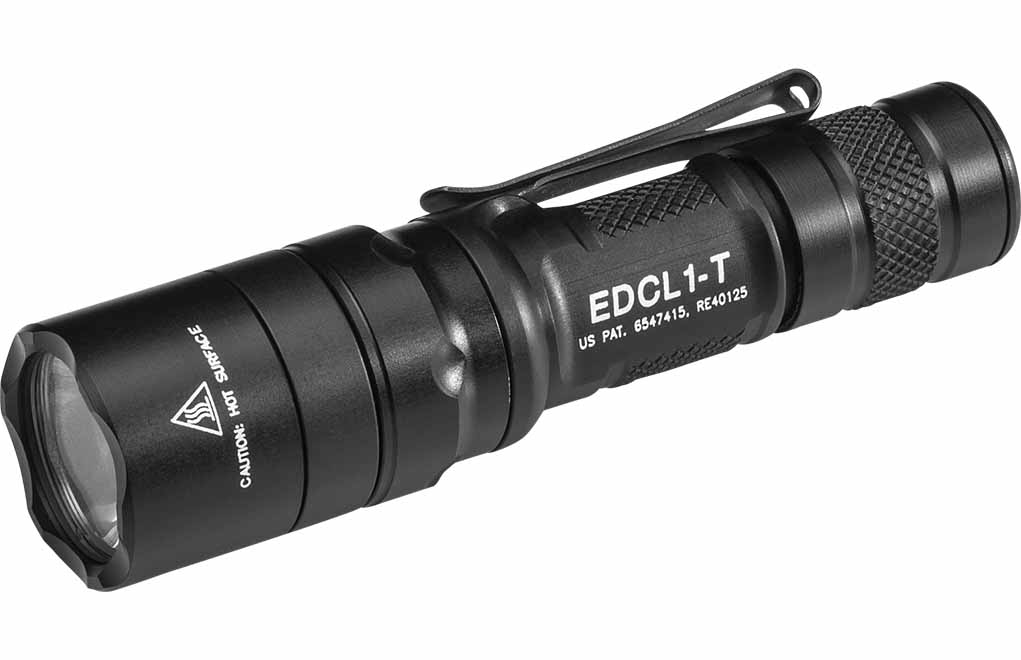
Surefire has long been a leader in tactical lights. The EDCL-1 is an upgrade to the popular EB1 Backup. Its high-output LED delivers 500 lumens of blinding white light on high for 1 hour, and a practical 5 lumens on low for 45 hours. A Total Internal Reflection (TIR) lens shapes the LED’s light into a versatile beam, which is ideal for everyday carry. An aerospace aluminum body and LED emitter are virtually indestructible. With a CR123A battery, the 4.5-inch light weight just 3.3 ounces.
MSRP: $165 light // $32 charging kit with two batteries
Crimson Trace CWL-300
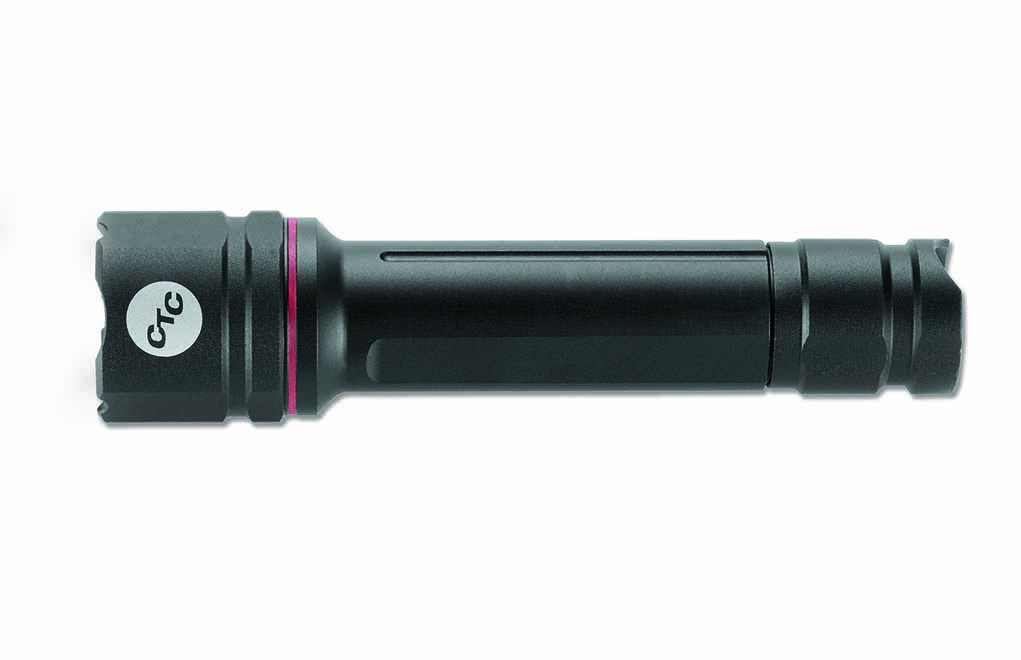
Crimson Trace is best known for its world-beating gun-mounted laser sights, so it’s not surprising they also offer a leading-edge tactical flashlight. The CWL-300 weighs a feathery 1.82 ounces and measures just 4 inches. The bulb is a high-output Cree XPL LED, powered by a single CR123A battery. The tap-on, tap-off switch in the tail cap accesses four modes: high, low, momentary, constant. You can expect 2 hours of 200-lumen light on high and 8 hours at 50 lumens on low. The super-tough anodized aluminum body is waterproof down to a full meter, and a pocket clip is a perfect finishing touch for everyday carry.
MSRP: $69
Streamlight Pro TAC HL
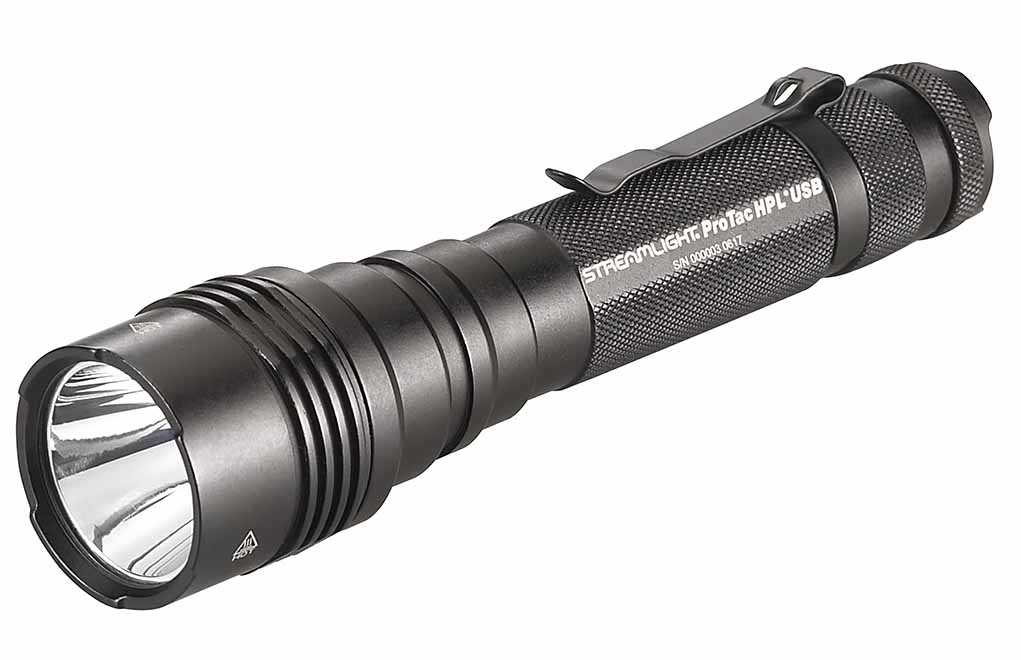
If the late-night chore calls for lots of light, consider the Streamlight Pro TAC HL. On a full charge of its USB-rechargeable batteries, this ultra-bright light blows out 3,500 lumens — and the LED light will maintain that output for an hour and 15 minutes. On the low setting, 250 lumens will be emitted for 2.5 hours. It will also run on four CR123A batteries, though outputs will be more modest. At 9.5 inches long and weighing just over 1 pound, the Pro TAC HL is still relatively compact and easy to carry — especially in a bug-out bag or in a vehicle. The aircraft aluminum tube is more than durable, and a rubber sleeve provides thermal insulation and positive gripping.
MSRP: $100 with USB charger // $75 with CR123A batteries
Maglite MAC-TAC CR123
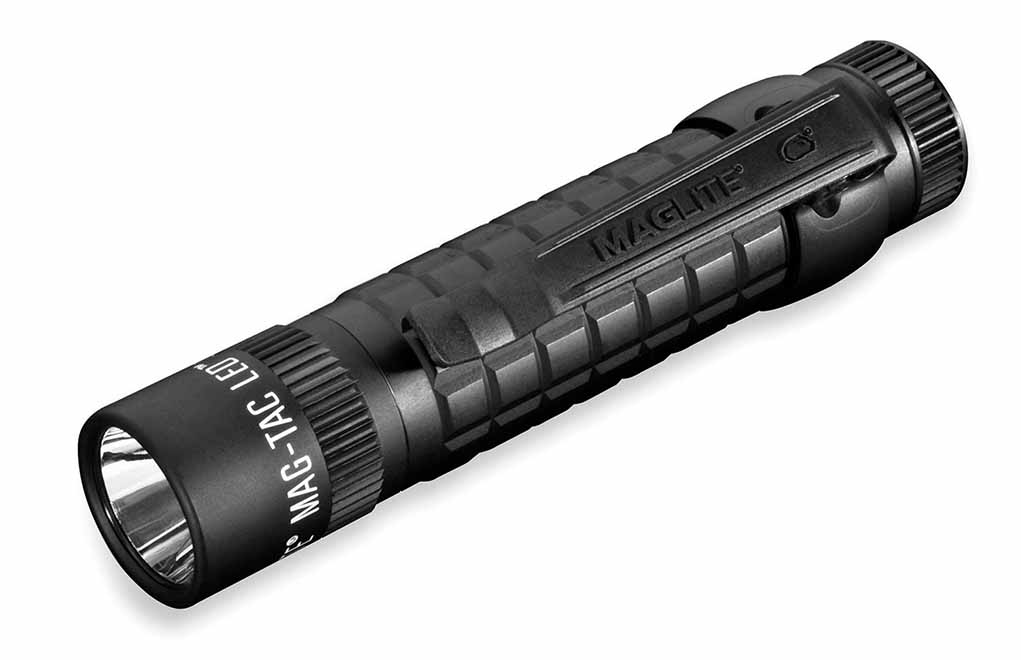
Featuring a total length of 5 inches and weighing less than 5 ounces, the MAC-TAC CR123 LED flashlight is a very good thing in a very small package. A pair of fresh batteries will blast out 320 lumens of bright white light, throwing that light out to 200 yards for up to 4 hours. The flashlight comes with a detachable pocket clip and features three modes: full power, strobe and momentary. The aluminum body is machined with a knobby, easy-to-grip texture, and waterproof seals protect the batteries and circuits.
MSRP: $95
Duracell Durabeam Ultra
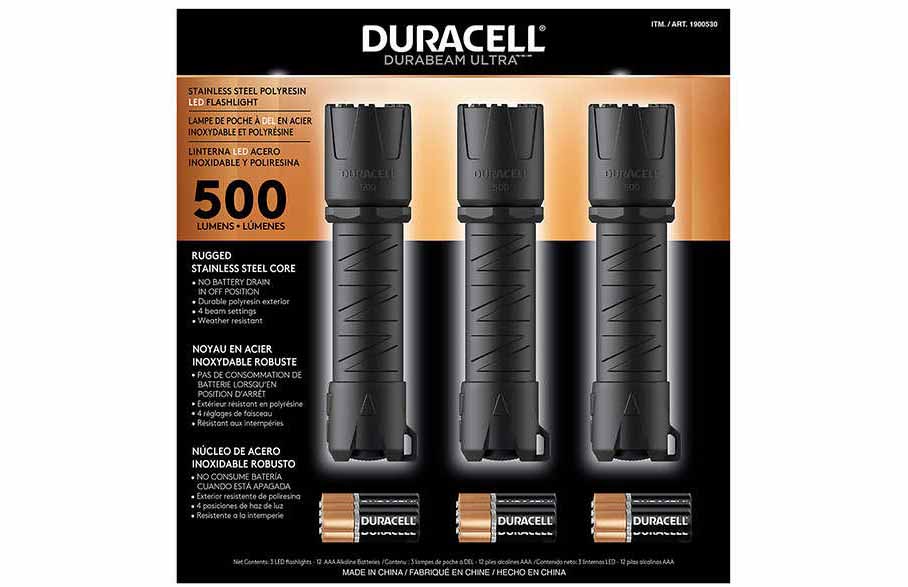
Via the Costco warehouse, Duracell offers a three-pack of their Durabeam Ultra Flashlights. The water-resistant LED flashlight kicks out 500 lumens, and a frame made of stainless-steel coated in a polyresin is nearly bulletproof. The lights also sport high and low output settings for wise power management, and a unique on/off switch prevents the three AAA batteries (included) from being inadvertently drained. Oh — and team adjusts from spot to flood. No, the Durabeam Ultra doesn’t perform like a $200 flashlight. But, it certainly holds its own compared to far pricier lights. They are inexpensive enough to stuff one in the glove box, one in the gear bag and another in your pocket. You would always have light and you’d never feel under-gunned.
MSRP: $20
It’s okay if you struggle with the notion of spending hundreds of dollars on a hand-held light. While the price-range between lights is broad, the differences between high-end flashlights and middle-of-the-pack lights are more subtle.
Do your homework: There are some bad lights out there. A bunch of the cheap ones are barely worth the batteries you put in them. However, you can find inexpensive lights that perform as well, if not better, than high dollar units.

Next Step: Get your FREE Printable Target Pack
Enhance your shooting precision with our 62 MOA Targets, perfect for rifles and handguns. Crafted in collaboration with Storm Tactical for accuracy and versatility.
Subscribe to the Gun Digest email newsletter and get your downloadable target pack sent straight to your inbox. Stay updated with the latest firearms info in the industry.

![Best Concealed Carry Guns In 2025 [Field Tested] Wilson Combat EDC X9S 1](https://gundigest.com/wp-content/uploads/Wilson-Combat-EDC-X9S-1-324x160.jpg)


![Best 9mm Carbine: Affordable PCCs [Tested] Ruger Carbine Shooting](https://gundigest.com/wp-content/uploads/Ruger-Carbine-Shooting-100x70.jpg)
![Best AR-15: Top Options Available Today [Field Tested] Harrington and Richardson PSA XM177E2 feature](https://gundigest.com/wp-content/uploads/Harrington-and-Richardson-PSA-XM177E2-feature-100x70.jpg)
